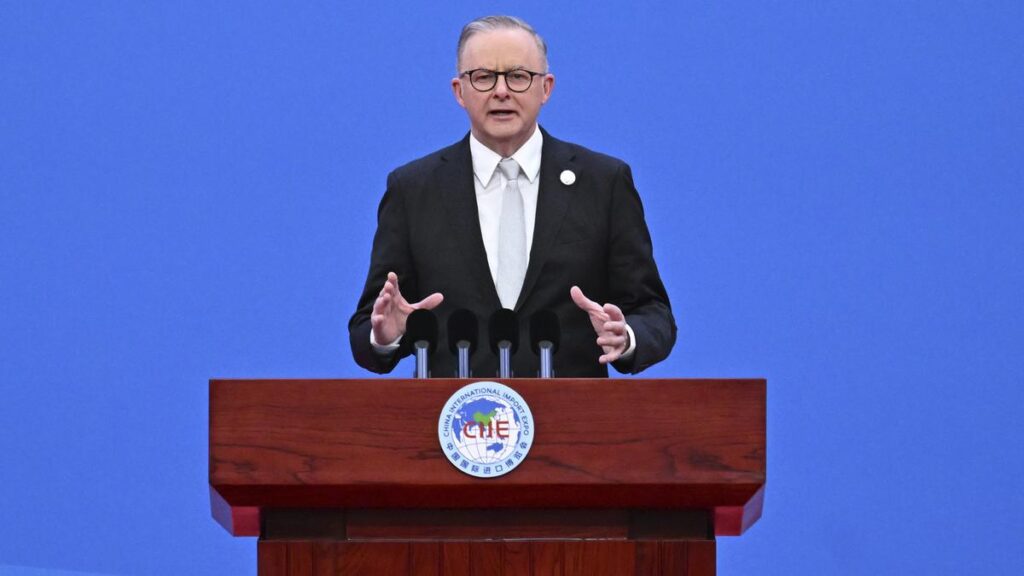Australian Prime Minister Anthony Albanese Calls for Cooperation with China
Australian Prime Minister Anthony Albanese expressed optimism ahead of his meeting with Chinese leader Xi Jinping on November 6. He emphasized the need for cooperation between the two countries while acknowledging that differences will remain. This visit marks a significant moment as Albanese becomes the first Australian Prime Minister in seven years to visit China, signaling a potential thaw in the strained relationship between the two nations.
Symbols of Reconciliation
Albanese’s visit carries symbolic weight, occurring near the 50th anniversary of the first visit by an Australian Prime Minister to the People’s Republic of China. It represents an opportunity to repair the damage caused by trade and security disputes, which had led to a significant downturn in relations. The meeting between Albanese and Xi holds the promise of improved collaboration between the two nations.
An Optimistic Tone
During his visit, Albanese emphasized the importance of cooperative efforts while remaining practical about the existing differences. In Beijing, he stated, “We need to co-operate with China where we can, disagree where we must, and engage in our national interest.” He also highlighted positive developments, including the removal of trade barriers and substantial growth in bilateral trade.
This optimistic tone reflects a mutual desire to rebuild trust and foster a more productive relationship between China and Australia. Both parties recognize the value of cooperation in areas of shared interest.
Turbulent Years
China and Australia have faced significant challenges in recent years, leading to a breakdown in their relationship. Concerns surrounding Chinese interference in Australian politics, coupled with Australia’s call for an inquiry into the origins of the COVID-19 virus, fueled tensions between the two nations.
In response, China imposed official tariffs and unofficial trade barriers, impacting Australian exports of commodities such as coal, wine, beef, barley, and lobsters. These measures have had an estimated annual cost of up to 20 billion Australian dollars ($13 billion) for Australian exporters.
Signs of Resolution
However, in recent months, China and Australia have indicated a willingness to find resolutions to their trade disputes. The release of Australian journalist Cheng Lei in October after three years in detention, on charges of espionage, has been seen as a positive step towards easing tensions.
Although Albanese’s visit represents progress in rebuilding relations, Australia continues to pursue a security partnership with the United Kingdom and the United States to counterbalance China’s influence in the region. This pursuit aligns with Australia’s broader strategic goals and indicates its commitment to maintaining a strong regional presence.
Conclusion
Australian Prime Minister Anthony Albanese’s visit to China serves as a symbol of hope for improved relations between the two nations. His call for cooperation while acknowledging differences reflects a pragmatic approach towards rebuilding trust. The removal of trade barriers and positive signals from both sides indicate progress in resolving trade issues.
While Australia seeks mutual understanding with China, it is also actively pursuing security partnerships with other countries to ensure its national interests are protected. This balanced approach highlights the complexity of Australia’s foreign policy goals.
As Albanese meets with Chinese leader Xi Jinping, hopes are high for fruitful discussions that will pave the way for future collaboration. Both nations recognize the importance of cooperation and shared interests in fostering a productive relationship moving forward.


